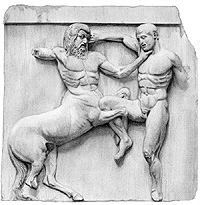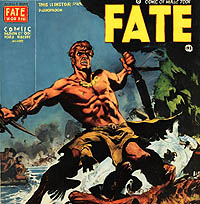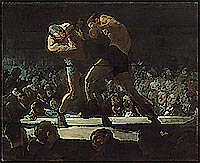When discussing upcoming or even published titles readers often ask me about the length of the piece. Writers go by word-count. But when I offer a word-count it is meaningless to the reader. They will then usually ask for a page-count equivalent. The reason why we writers do not like to define things by page-count is because of the variance in type size and format. Your teacher communicates her expected length of your assigned paper in page-length, because you are double-spacing in 12 point, most likely; all of you following the same format.
As a writer, you never know what the publisher is going to decide on for type style and size and format, and this may vary from edition to edition for the same work. So, when an editor lets a writer know what her expectation is, it will usually be in word-count or by template [novel, novella, short…], unless she is used to dealing with first-time meathead authors who are writing karate manuals.
In the titles and product descriptions Charles and I have attempted to indicate the story length, with him very reasonably vetoing my book-geek author’s desire to use word-count. Below is a brief definition of story lengths. But first, let me define word-count in terms of page-count.
Manuscripts and the Published Page
One double-spaced manuscript page on 8 ½ by 11 paper printed in 12 point Times Roman is about 200 words, perhaps 225.
One single-spaced manuscript page on 8 ½ by 11 paper printed in 12 point Times Roman might be 500 words. In 11-point Calibri it might be 550 words.
These two manuscript formats convert into two book formats you should be familiar with.
A double-spaced manuscript page is about equal to a page in a fiction paperback book.
A single-spaced manuscript page is roughly equal to a page in a nonfiction full-size book.
Nonfiction offers denser fields of text because of the lack of dialogue.
Story Length by Word-count
Flash-fiction, or Vignette, or a Scene
Up to 1,000 words, 2-3 single-spaced pages
I rarely use this length for a stand-alone piece, but as a building block for a larger story, or as illustrations for nonfiction.
Short Story
From 1,000 to 7,000 words, 3-12 single-spaced pages
Writing in this length is a test of composition ability, as it requires concise composition, and is the preferred length for magazines and anthologies. This is an easy length for serial composition, but a tough one for stand-alone tales.
Novelette
From 7,500 to 17,500 words, or 14-30 single-spaced pages
This is my favorite length because I like to use a lot of dialogue and explicit action. It might be said that my novelettes are just up-gunned shorts.
Novella or Short Novel
From 17,500 to 40,000 words, or 35-70 single-spaced pages
This is the length of many classic sci-fi stories, and is the shortest piece of fiction that can realistically be marketed as a stand-alone print book. This length is favored by sci-fi writers because it permits a novel to be stripped down by omitting much of the character development in traditional fiction, or permits a simple story to be enhanced with wondrous and/or speculative aspects.
Coincidentally, or not, this is the length of most of my recent nonfiction work, mostly in the twenty-k range.
Novel
A story of more than 40,000 words, or 75+ single-spaced pages
A 40 to 45,000 word novel is something you can read on your day off, in a single afternoon; a 200-page paperback, of the kind I used to devour as a teenager. Genre fiction like mystery, romance and western still follow this formula. This is the classic length used by science-fiction and science-fantasy adventure novelists like Edgar Rice Burroughs, and western novelists like Louis L’Amour; perfect for an action-adventure. Today a science-fiction or fantasy novelist is expected to come in at around 80,000 words, as these genre’s appeal to readers who like to take their time enjoying the alternative reality presented in the book, and also require much additional back-story; particularly in fantasy.
The length varies greatly. My shortest novel is The World is Our Widow at 54,000 words and 98 pages. My longest is Of The Sunset World, essentially an ‘origins’ novel in comic terms; a 272,000-word 466-page monster. I personally think I’m at my best as a novelist in the 90,000 word range; most closely represented by Thunderboy, which I consider my best-crafted long piece.
E-Length
Charles, as my electronic-publisher, expresses book-length in file size, which also takes into account illustrations. I like that approach because it recognizes the illustrator’s contribution. The page-length of the various PDFs will vary depending on the type size and font he employs for that particular piece.
For the Book-geek So Inclined
I will update the story lengths of my fiction offered for sale in e-book form on this site below, so that it may be used as a reference before purchase. The page-count given is from my single-spaced manuscript in 11-point Calibri or 12-point Calibri or New Times Roman. They are, in the order written:
Of The Sunset World: 272,000 words, 466 pages
Beyond the Ember Star: 69,660 words, 121 pages [anthologized in Pillagers of Time]
Comes the Six Winter Night: 34,852 words, 62 pages [anthologized in Pillagers of Time]
Thunderboy: 93,289 words, 137 pages [anthologized in Pillagers of Time]
By This Axe!: 13,882 words, 24 pages
Soter’s Way: 7,993 words, 14 pages
Organa: 14,296 words, 26 pages
The World is Our Widow: 54,270 words, 98 pages
Behind the Sunset Veil: 101,712 words, 186 pages
Den of The Ender: 67,682 words, 123 pages
Buzz Bunny: 13,789 words, 24 pages
Just for the curious this article is 947 words at 3 pages.











